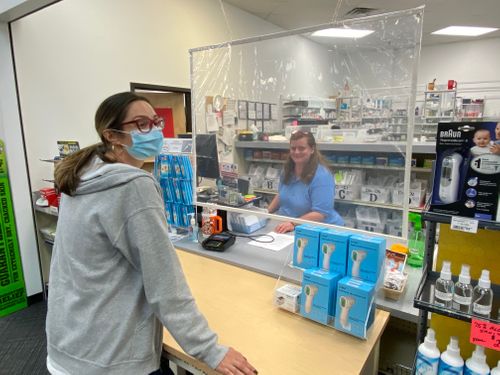The major changes to the healthcare system in recent years have sparked a great deal of interest in the quality of care. New organisational designs and payment schemes have produced incentives that could have an impact on healthcare standards. Despite the likelihood that some of the systems would increase quality, worries about potential negative effects have sparked a push to ensure that quality will not be compromised in order to save costs. There is no systematic information concerning the quality of treatment in the United States, therefore concerns about quality are more based on anecdotes and anxiety than on actual facts. We have few local systems and no obligatory national mechanism to monitor the calibre of healthcare provided to Americans.
There is more information accessible than there is on the quality of healthcare on aeroplanes, restaurants, vehicles, and VCRs. According to studies conducted in the last ten years, some people are receiving less care than they require while others are receiving more. According to simple averages derived from research, 50% of patients received the appropriate preventive treatment, 70% received the recommended acute care, 30% received the contraindicated acute care, 60% received the recommended chronic care, and 20% received the contraindicated chronic care.
These results strongly imply that professional standards are frequently not met by the treatment provided in the United States. It would be possible to provide more accurate assessments of the state of the country’s healthcare system and identify the areas that require improvement if efforts were made to evaluate the quality and frequently communicate the results to the general public. President-elect Joe Biden confronts a significant challenge in the coming four years after a close election: the serious underlying issues with the US healthcare system.
The United States is behind other industrialised nations in a number of crucial healthcare indices despite investing $2.6 trillion annually – the biggest amount in the developed world per capita – and achieving a modest Healthcare Quality & Access (HAQ) Index Rating of 88.7 in 2018. Mr Biden made mention of the impending “fight to safeguard your family’s healthcare” in his acceptance address last week. In a decade that was sparked by a significant worldwide epidemic, the US government has focused heavily on the shortcomings of American healthcare and the difficulties in providing high-quality treatment to 330 million individuals.
As in any sector, quality specialists in healthcare recognise the need for maximised effectiveness. Modern quality management is focused on reducing costs, defects, and waste while maximising the value and effect of corporate spending and integrating continuous improvement. However, it is challenging to view the US healthcare system as a model of effectiveness or ongoing quality improvement. Despite investing 50% more in per capita healthcare than its nearest competitor (Norway), the US has average worldwide healthcare rankings, which amply illustrates a leaky bucket.
In other words, the US is pouring enormous sums of money into its healthcare system, yet it is misusing those funds. Whatever the political benefits of decentralisation for the American federal government, it has exposed the US healthcare system to a number of flaws and shortcomings. The absence of centralised control makes it harder to find out carelessness and even intentional criminal conduct, which has major implications for US patients’ health and quality of care. Dr Christopher Duntsch, a neurosurgeon from Texas who operated on 33 individuals in the Dallas-Fort Worth metropolitan region between 2010 and 2013, was profiled in 2018 by Wondery’s well-known Dr Death podcast.
Duntsch was frequently ejected from the operating room despite catastrophic recurrent ineptitude and even email exchanges that seemed to indicate some sort of malicious desire to hurt. Duntsch’s actions weren’t revealed until sustained pressure on the Texas Medical Board and the National Practitioner Data Bank. The head of neurosurgery at UT Southwestern said, “The only way this happens is if the whole system fails the patients. In fact, more Americans are thought to die each year from medical errors than from vehicle accidents or breast cancer, at roughly 100,000.
And despite widespread underreporting, the US healthcare system has the highest mistake and delay rate in the world. This may be due to a lack of broad control and regulation.
The deliberate widespread abuse of the broken US healthcare system is clearly evident. In 2017, 412 medical professionals from throughout the country were accused of defrauding the US government by charging Medicaid and Medicare for procedures and treatments that never happened. Medical fraud costs the US healthcare system $100 billion annually. This includes so-called “ghost patients,” fake testing, and even invoicing for patients who were deceased at the time of “treatment.”
As patients are transferred between several layers of the healthcare system, discrete, non-integrated systems of hospitals, private insurers, nursing homes, and home care minimise quality evaluation and assurance while allowing fraud and exploitation to proliferate. The US falls behind other developed nations in its ability to treat avoidable mortality: hospitalizations for preventable, ambulatory care-sensitive conditions like diabetes and hypertension were 50% higher than the OECD average last year. This is in addition to the wasteful, expensive, and frequently unnecessary treatments we’ve already seen. Additionally, Americans see doctors and dentists less frequently than those in other nations.
And over 16% of Americans have no health insurance at all, leaving them vulnerable to emergencies that result in expensive medical bills like this one. According to estimates, medical debt accounts for at least a portion of bankruptcies in the United States, with costs determined not by how satisfied patients are with their care or how much they can afford, but rather by a complicated web of profit-sharing arrangements, contracts, and negotiations between numerous parties.

